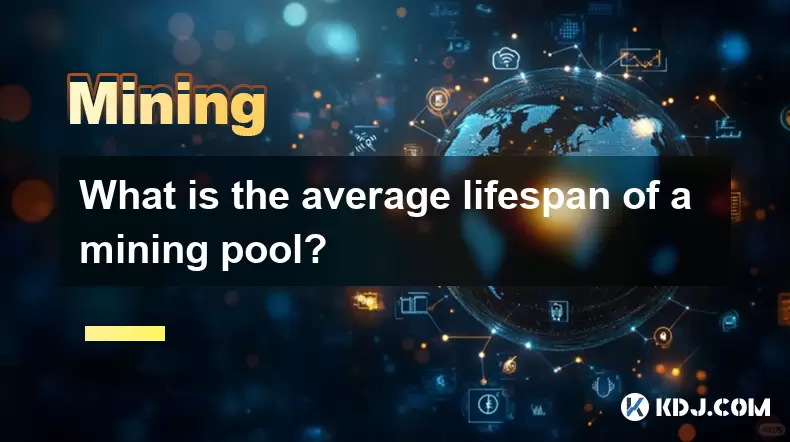-
 Bitcoin
Bitcoin $122,606.5469
4.05% -
 Ethereum
Ethereum $3,030.9726
2.47% -
 XRP
XRP $2.9632
5.89% -
 Tether USDt
Tether USDt $1.0001
-0.02% -
 BNB
BNB $703.7501
1.91% -
 Solana
Solana $166.4981
2.63% -
 USDC
USDC $0.9998
-0.01% -
 Dogecoin
Dogecoin $0.2059
3.75% -
 TRON
TRON $0.3034
0.82% -
 Cardano
Cardano $0.7534
1.69% -
 Hyperliquid
Hyperliquid $48.5519
1.41% -
 Stellar
Stellar $0.4752
7.04% -
 Sui
Sui $3.9140
13.90% -
 Chainlink
Chainlink $16.0052
4.10% -
 Hedera
Hedera $0.2481
7.89% -
 Bitcoin Cash
Bitcoin Cash $517.9548
2.40% -
 Avalanche
Avalanche $21.7177
2.16% -
 UNUS SED LEO
UNUS SED LEO $9.0350
0.04% -
 Shiba Inu
Shiba Inu $0.0...01373
4.00% -
 Toncoin
Toncoin $3.0283
0.75% -
 Litecoin
Litecoin $96.2061
1.75% -
 Polkadot
Polkadot $4.1076
2.82% -
 Monero
Monero $350.3051
3.14% -
 Uniswap
Uniswap $9.2991
9.82% -
 Dai
Dai $0.9998
-0.01% -
 Ethena USDe
Ethena USDe $1.0004
-0.01% -
 Pepe
Pepe $0.0...01260
3.52% -
 Bitget Token
Bitget Token $4.4459
1.08% -
 Aave
Aave $322.7677
6.21% -
 Bittensor
Bittensor $421.8669
8.02%
What is the average lifespan of a mining pool?
Mining pools combine resources to boost block-mining success, with lifespans shaped by market shifts, tech changes, and regulation.
Jul 14, 2025 at 01:14 pm

Understanding the Concept of a Mining Pool
A mining pool is a collaborative network of cryptocurrency miners who combine their computational resources to increase the probability of successfully mining a block. By pooling their hashing power, participants can achieve more consistent rewards compared to solo mining. The concept is central to the decentralized nature of blockchain networks and plays a crucial role in maintaining network security.
The average lifespan of a mining pool refers to how long a particular mining pool remains operational and competitive in the ever-evolving crypto environment. This duration varies widely based on several factors including technological advancements, market conditions, and regulatory changes.
Factors Influencing the Lifespan of a Mining Pool
Several key elements determine how long a mining pool may remain active:
- Market Volatility: When cryptocurrency prices drop significantly, some pools may become unprofitable, leading to shutdowns or mergers.
- Mining Difficulty Adjustments: As difficulty increases due to more powerful hardware entering the network, older pools with less efficient infrastructure may struggle to keep up.
- Regulatory Environment: Changes in government policies regarding cryptocurrency mining can impact the legality and sustainability of certain pools.
- Pool Fees and Reward Structures: Pools that charge high fees or offer inefficient reward systems may lose miners to more competitive alternatives.
- Technological Obsolescence: Older mining pools using outdated software or hardware configurations may not support newer consensus algorithms or protocol upgrades.
These factors collectively shape the longevity of a mining pool in the ecosystem.
Historical Examples of Mining Pool Longevity
Looking at historical data provides insight into how long mining pools typically last. Some established pools like Slush Pool and F2Pool have been operational for over a decade. These pools have maintained relevance by adapting to changing technologies, offering transparent fee structures, and providing reliable uptime.
Conversely, many smaller or region-specific pools have had much shorter lifespans. For instance, during the 2018 bear market, numerous small pools shut down due to declining profitability. Similarly, after China's ban on cryptocurrency mining in 2021, several local pools either migrated overseas or ceased operations entirely.
This variability illustrates that while some pools can endure for years, others may only last a few months under adverse conditions.
Operational Challenges That Impact Pool Sustainability
Running a mining pool involves complex logistics and ongoing maintenance:
- Server Uptime and Stability: Frequent downtimes or technical glitches can drive miners to switch pools.
- Transparency in Block Rewards Distribution: If a pool fails to distribute rewards accurately or delays payments, trust erodes quickly among participants.
- DDoS Attacks and Cybersecurity Threats: Mining pools are often targets for malicious attacks aimed at disrupting operations or stealing funds.
- Administrative Costs: Hosting, bandwidth, and staff expenses must be managed carefully to avoid financial losses.
Pools that fail to address these challenges effectively are more likely to close prematurely.
How Miners Can Choose Durable Mining Pools
To maximize mining efficiency and ensure long-term participation, miners should consider several criteria when selecting a pool:
- Reputation and Track Record: Look for pools with a proven history of reliability and positive community feedback.
- Geographic Server Locations: Proximity to servers reduces latency and improves mining efficiency.
- Fee Structure and Transparency: Lower fees combined with clear reporting mechanisms are preferable.
- Support for Mining Software Compatibility: Ensure the pool supports your specific mining hardware and software.
- Responsive Customer Support: A responsive team can help resolve issues quickly and minimize downtime.
By evaluating these aspects, miners can select a pool with a higher likelihood of sustained operation.
Frequently Asked Questions (FAQ)
What happens to my mined coins if a pool shuts down?
If a mining pool closes unexpectedly, any accrued but unclaimed rewards should still be distributed to miners' wallets, assuming the pool operated honestly. It's crucial to monitor payout schedules and withdraw earnings regularly.
Can a mining pool suddenly stop operating without notice?
Yes, some pools may shut down abruptly due to technical failures, legal issues, or sudden drops in profitability. This is why diversifying mining efforts across multiple pools can mitigate risk.
Are larger mining pools more stable than smaller ones?
Generally, larger pools tend to be more resilient because they have broader user bases, better infrastructure, and more predictable revenue streams. However, they may also face increased scrutiny from regulators or centralization concerns within the crypto community.
Is it possible to run my own mining pool?
Technically, yes. Running a private mining pool requires significant technical expertise, server hosting capabilities, and continuous maintenance. Open-source mining pool software such as Stratum or NOMP can be used, but ensuring stability and security demands dedicated effort.
Disclaimer:info@kdj.com
The information provided is not trading advice. kdj.com does not assume any responsibility for any investments made based on the information provided in this article. Cryptocurrencies are highly volatile and it is highly recommended that you invest with caution after thorough research!
If you believe that the content used on this website infringes your copyright, please contact us immediately (info@kdj.com) and we will delete it promptly.
- UK Treasury Watch: Bitcoin Surge Lifts Companies Amidst Crypto Optimism
- 2025-07-14 16:30:12
- Finnovex South Africa 2025: Innovation and Expanding Inclusion in the Digital Finance Era
- 2025-07-14 16:30:12
- Pumpfun's $500M ICO: Memecoin Mania or the Future of Funding?
- 2025-07-14 14:30:12
- Dogecoin, XRP Price, and the Bitcoin Bull Run: What's the Hype?
- 2025-07-14 16:10:12
- Pump.fun's $PUMP Token Sale: A Wild Ride in the Memecoin Frenzy
- 2025-07-14 14:30:12
- Bitcoin Blasts Past $120,000 on Coinbase: All-Time Highs and What's Driving the Surge
- 2025-07-14 14:50:12
Related knowledge

How are crypto mining profits taxed?
Jul 14,2025 at 12:28am
Understanding Cryptocurrency Mining and TaxationCryptocurrency mining involves validating transactions on a blockchain network and earning rewards in ...

How to keep a mining rig cool
Jul 12,2025 at 01:42pm
Understanding the Importance of Cooling in Mining RigsCryptocurrency mining is an intensive process that places heavy demand on hardware components, p...

How much does it cost to start crypto mining?
Jul 13,2025 at 12:22am
Understanding the Basic Costs of Crypto MiningStarting crypto mining involves several upfront and ongoing expenses. The primary costs include hardware...

What is the most profitable crypto to mine?
Jul 13,2025 at 07:00am
Understanding Mining Profitability in CryptocurrencyWhen evaluating the most profitable crypto to mine, it's essential to consider several factors tha...

What do I need to start mining crypto?
Jul 13,2025 at 12:28am
Understanding the Basics of Crypto MiningCrypto mining is the process by which transactions are verified and added to a blockchain, and new coins are ...

How does crypto mining work?
Jul 13,2025 at 11:01am
Understanding the Basics of Crypto MiningCrypto mining is the process through which new cryptocurrency coins are introduced into circulation and trans...

How are crypto mining profits taxed?
Jul 14,2025 at 12:28am
Understanding Cryptocurrency Mining and TaxationCryptocurrency mining involves validating transactions on a blockchain network and earning rewards in ...

How to keep a mining rig cool
Jul 12,2025 at 01:42pm
Understanding the Importance of Cooling in Mining RigsCryptocurrency mining is an intensive process that places heavy demand on hardware components, p...

How much does it cost to start crypto mining?
Jul 13,2025 at 12:22am
Understanding the Basic Costs of Crypto MiningStarting crypto mining involves several upfront and ongoing expenses. The primary costs include hardware...

What is the most profitable crypto to mine?
Jul 13,2025 at 07:00am
Understanding Mining Profitability in CryptocurrencyWhen evaluating the most profitable crypto to mine, it's essential to consider several factors tha...

What do I need to start mining crypto?
Jul 13,2025 at 12:28am
Understanding the Basics of Crypto MiningCrypto mining is the process by which transactions are verified and added to a blockchain, and new coins are ...

How does crypto mining work?
Jul 13,2025 at 11:01am
Understanding the Basics of Crypto MiningCrypto mining is the process through which new cryptocurrency coins are introduced into circulation and trans...
See all articles

























































































